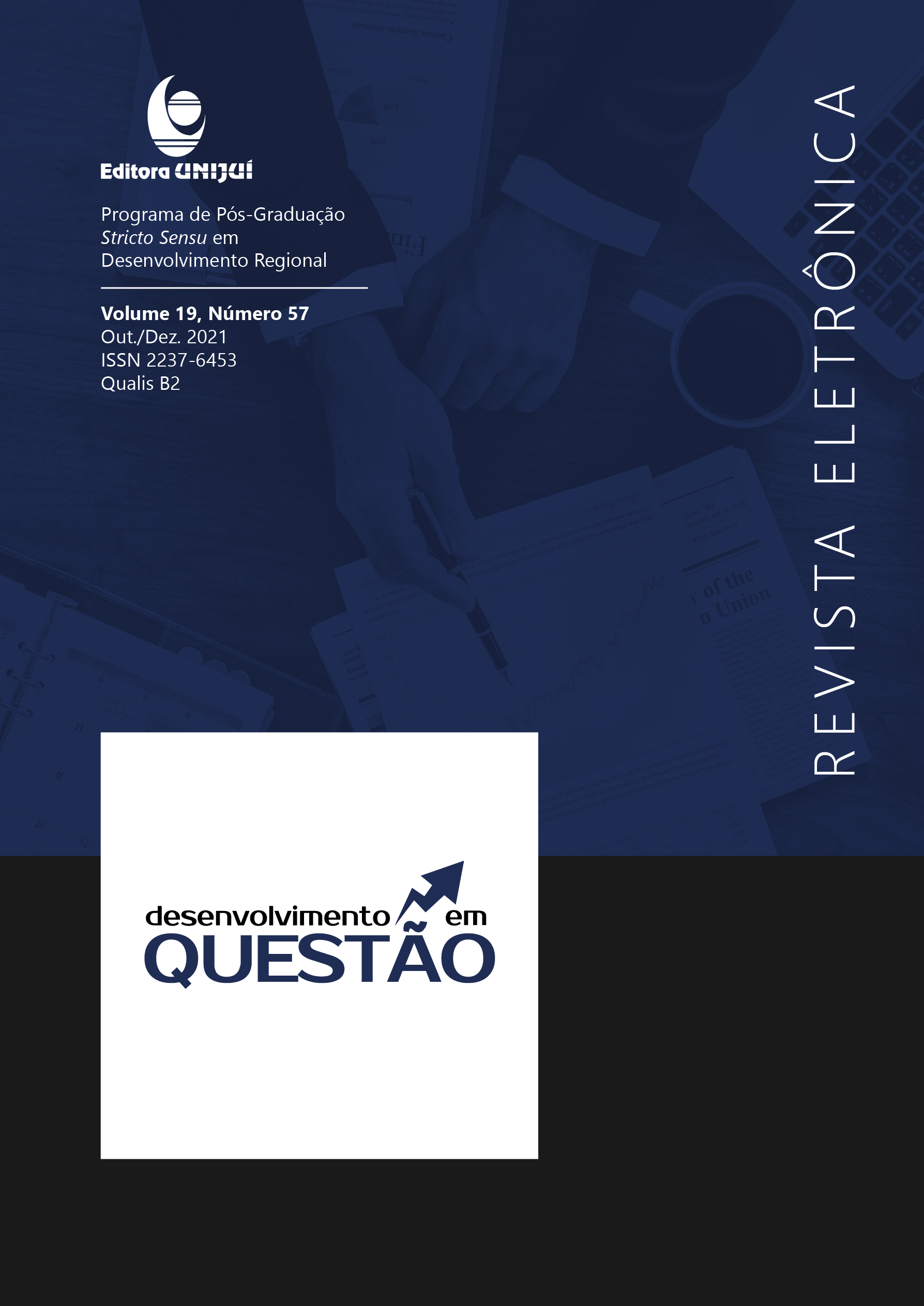Integração Regional por meio da Interconexão Elétrica: O Caso Brasil – Uruguai e as Perspectivas de Desenvolvimento para a Região de Fronteira
REGIONAL INTEGRATION TROUGH ELECTRICAL INTERCONNECTION: THE BRAZIL – URUGUAY CASE AND THE DEVELOPMENT PROSPECTS FOR THE BORDER REGION
DOI:
https://doi.org/10.21527/2237-6453.2021.57.12258Palavras-chave:
Integração Regional, Interconexão energética, Fronteira Brasil Uruguai, Exploração CarboníferaResumo
O presente artigo tem como objetivo geral analisar o processo de integração regional sob a ótica da interconexão energética entre os países, tendo como caso a interconexão elétrica entre Brasil e Uruguai, que se dá atualmente por meio das linhas de transmissão transfronteiriças entre os municípios de Santana do Livramento (RS) e Rivera (UR) e Candiota (RS) e Melo (UR). Além disso, busca analisar possíveis repercussões da última interconexão na exploração carbonífera para geração de energia elétrica na região da Campanha gaúcha. A pesquisa teve caráter qualitativo, com análise documental de fontes secundárias e balanço parcial da literatura sobre o tema. Os resultados apontam para a importância das interconexões para garantir a oferta suficiente de energia elétrica em períodos críticos, bem como indica a importância do papel das usinas térmicas a carvão, para a geração de energia firme, corrigindo os efeitos da sazonalidade hídrica ou eólica e garantindo segurança aos sistemas brasileiro e uruguaio.
Downloads
Publicado
Como Citar
Edição
Seção
Licença
Ao publicar na Revista Desenvolvimento em Questão, os autores concordam com os seguintes termos:
Os trabalhos seguem a licença Creative Commons Atribuição 4.0 Internacional (CC BY 4.0), que permite:
Compartilhar — copiar e redistribuir o material em qualquer meio ou formato;
Adaptar — remixar, transformar e criar a partir do material para qualquer fim, inclusive comercial.
Essas permissões são irrevogáveis, desde que respeitados os seguintes termos:
Atribuição — Atribuição — os autores devem ser devidamente creditados, com link para a licença e indicação de eventuais alterações realizadas.
Sem restrições adicionais — não podem ser aplicadas condições legais ou tecnológicas que restrinjam o uso permitido pela licença.
Avisos:
A licença não se aplica a elementos em domínio público ou cobertos por exceções legais.
A licença não garante todos os direitos necessários para usos específicos (ex.: direitos de imagem, privacidade ou morais).
A revista não se responsabiliza pelas opiniões expressas nos artigos, que são de exclusiva responsabilidade dos autores. O Editor, com o apoio do Comitê Editorial, reserva-se o direito de sugerir ou solicitar modificações quando necessário.
Somente serão aceitos artigos científicos originais, com resultados de pesquisas de interesse que não tenham sido publicados nem submetidos simultaneamente a outro periódico com o mesmo objetivo.
A menção a marcas comerciais ou produtos específicos destina-se apenas à identificação, sem qualquer vínculo promocional por parte dos autores ou da revista.
Contrato de Licença (para artigos publicados a partir de 2025): Os autores mantêm os direitos autorais sobre seu artigo, e concedem a Revista Desenvolvimento em Questão o direito de primeira publicação.











